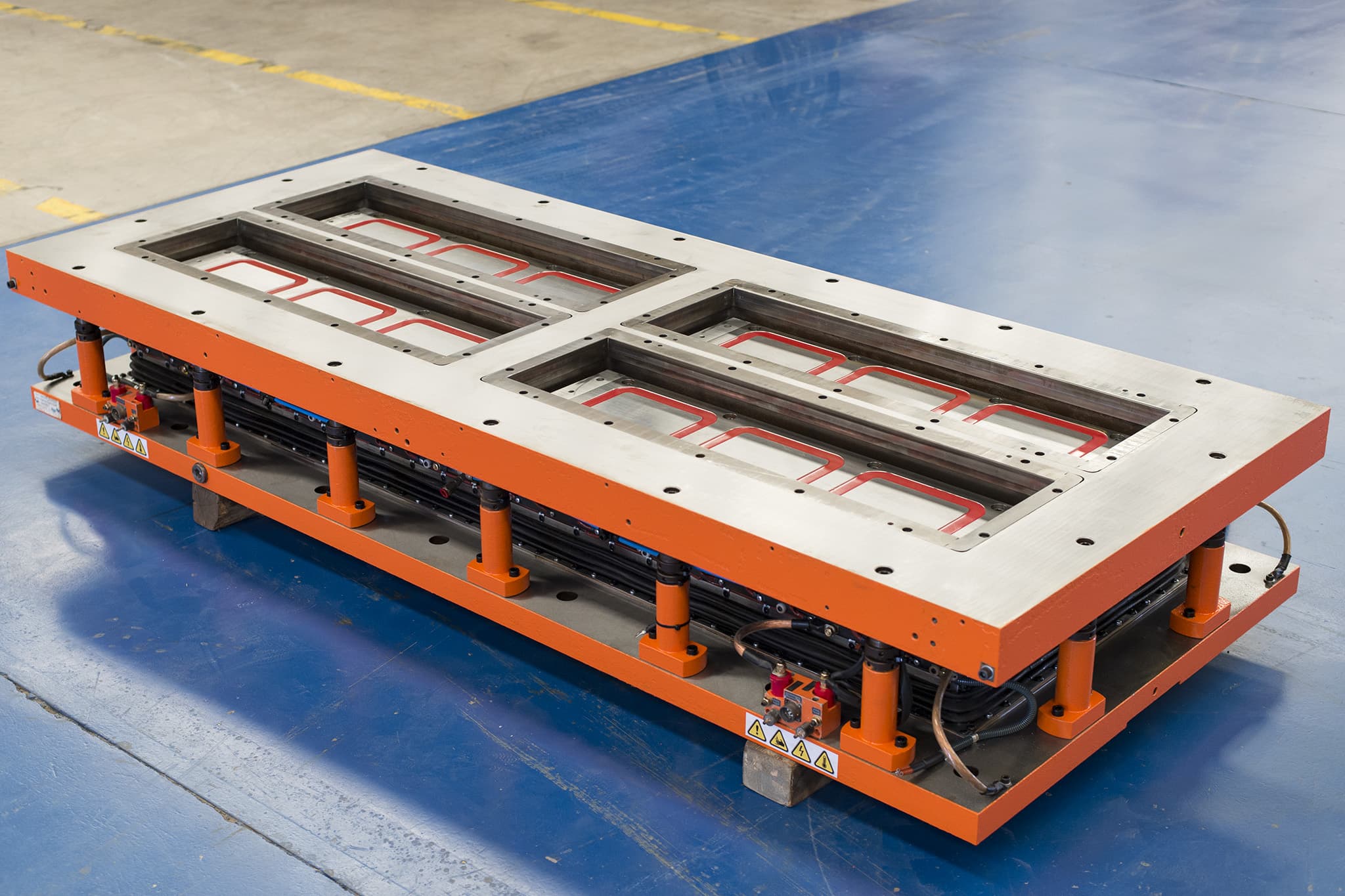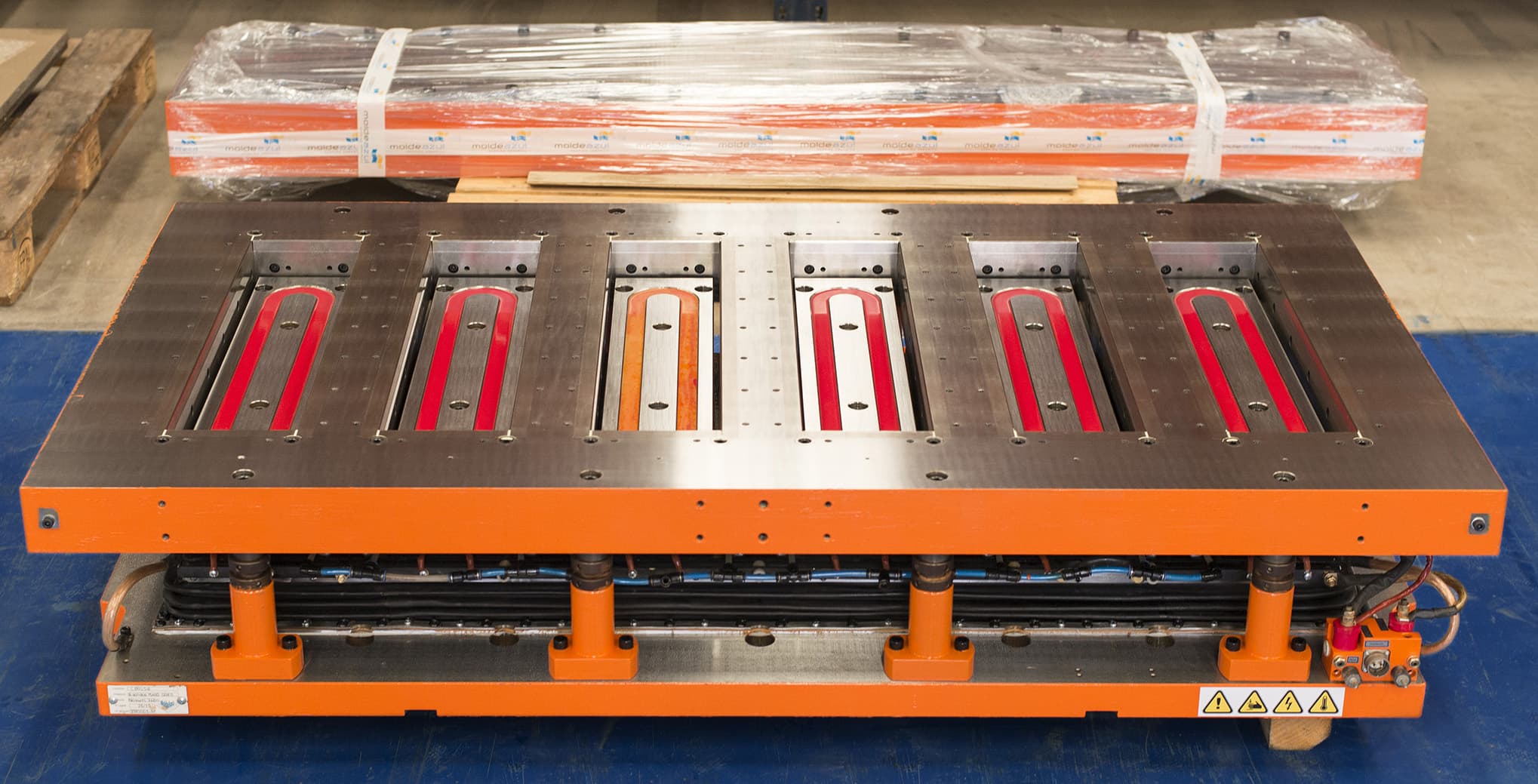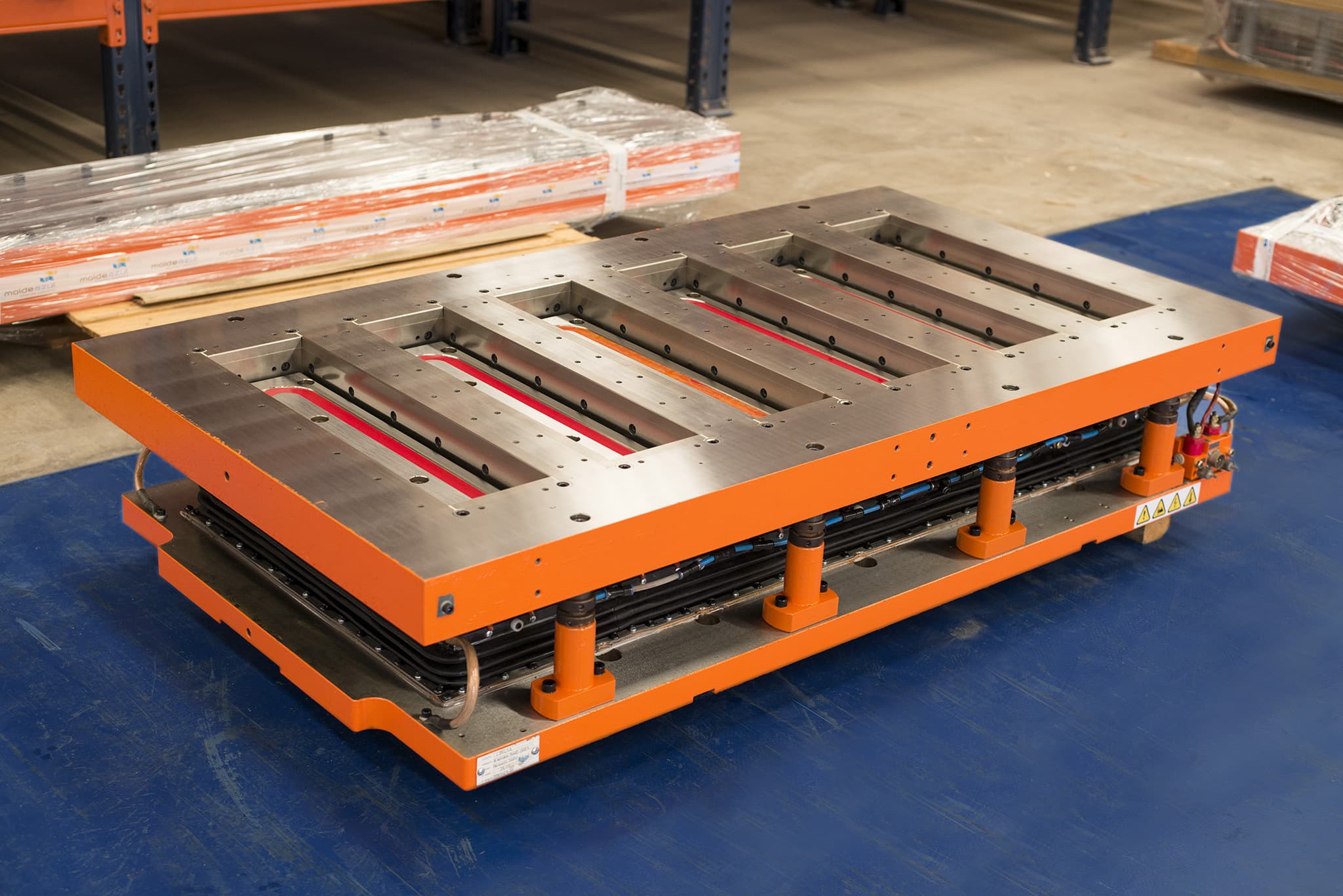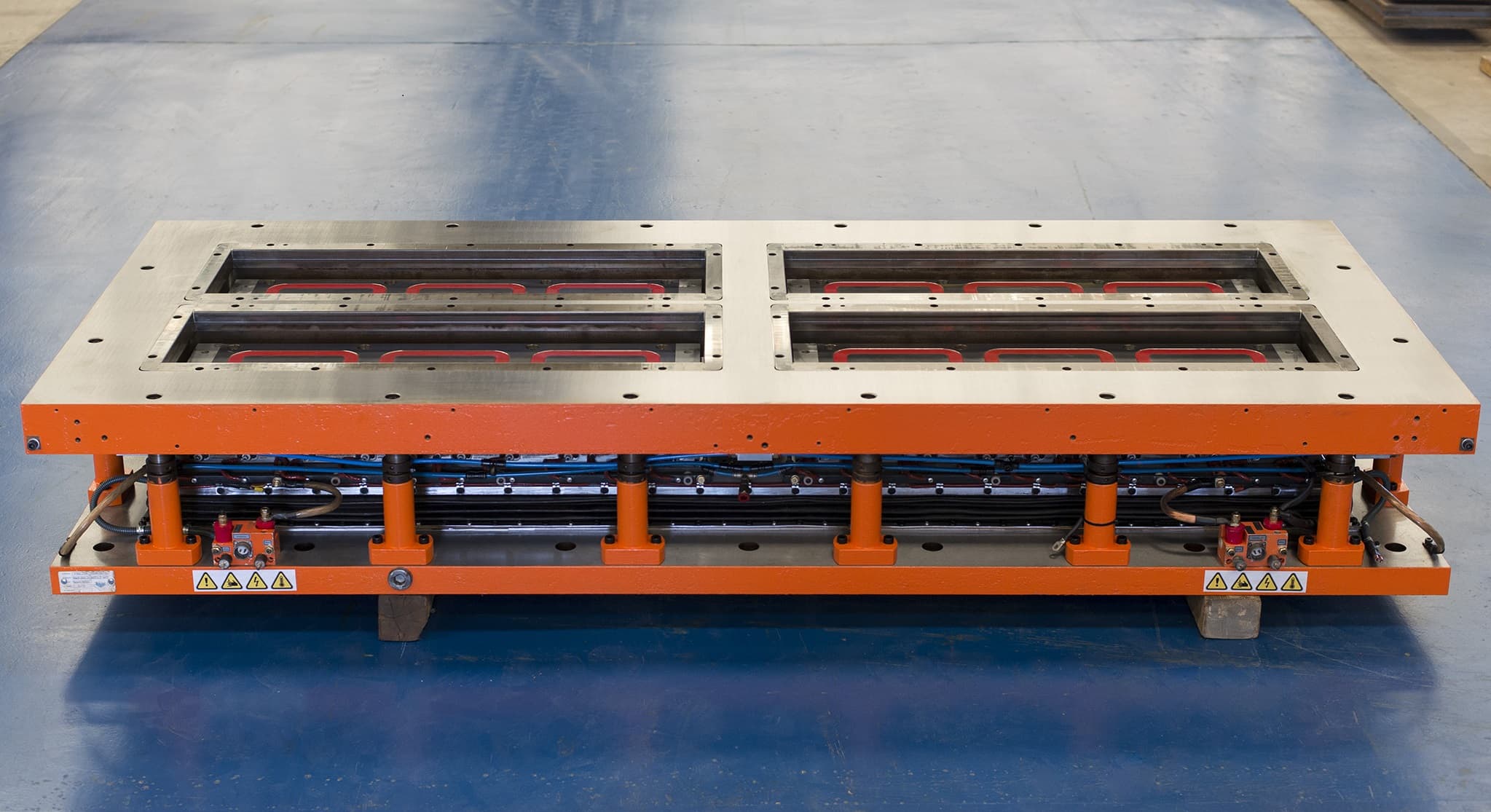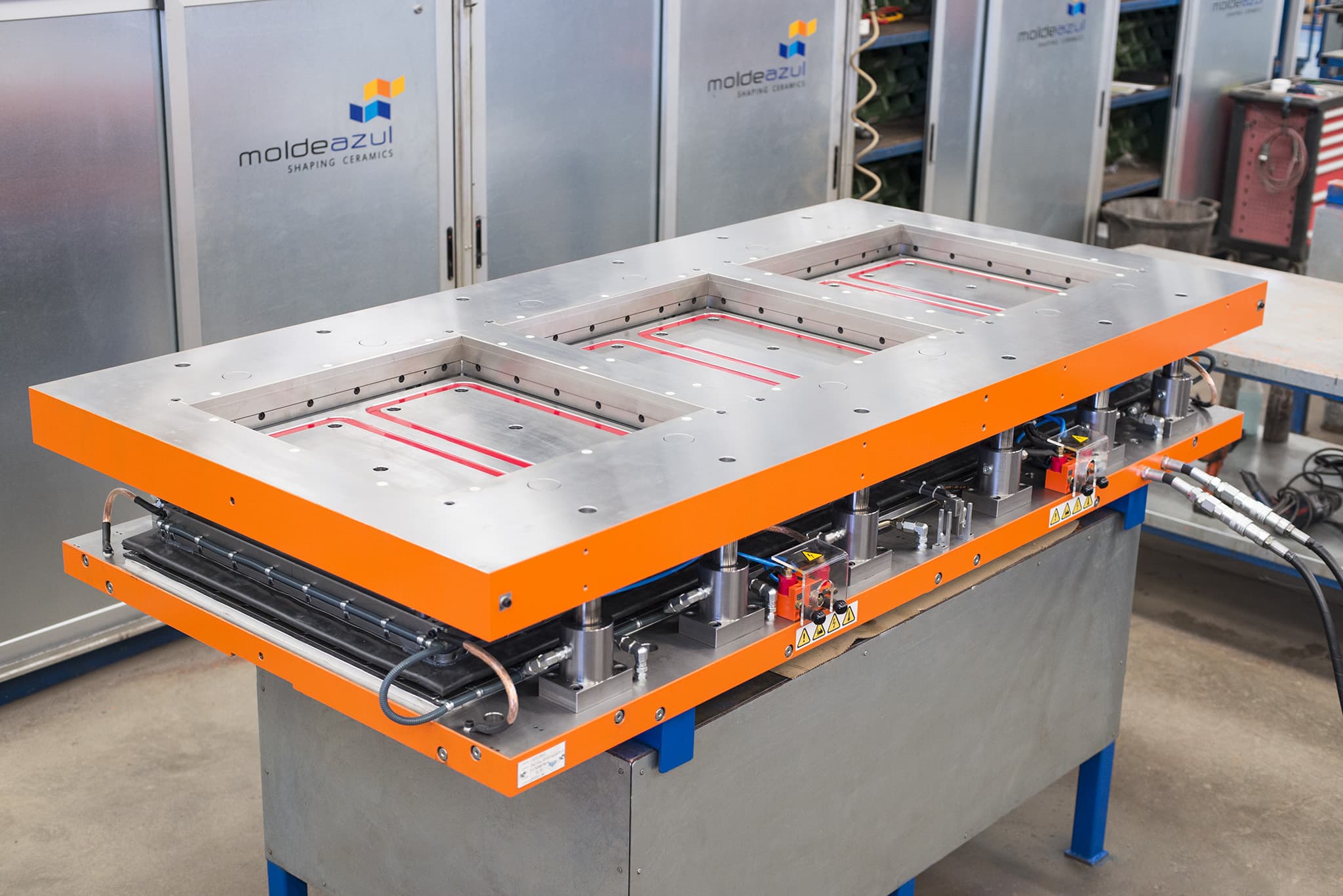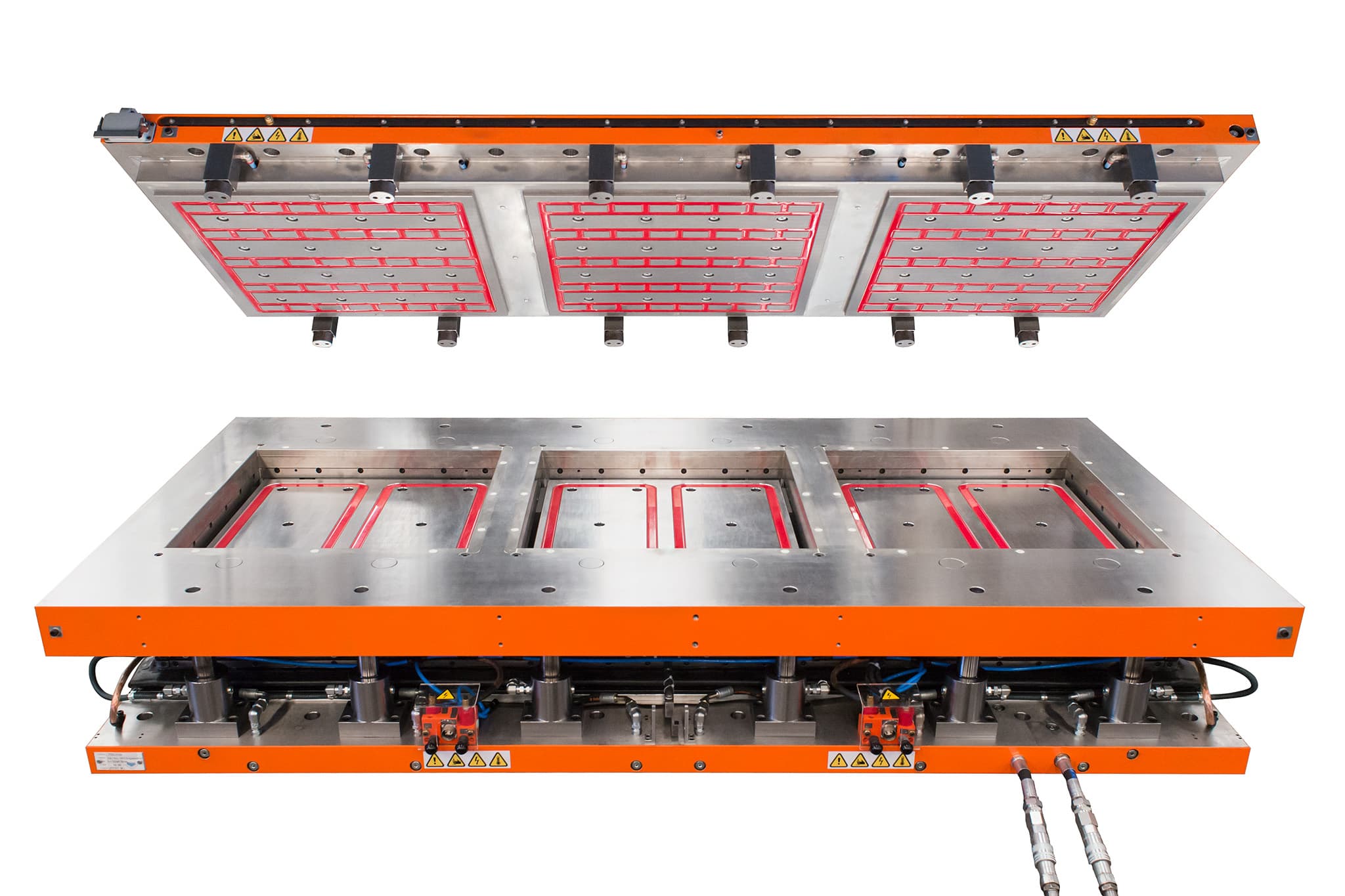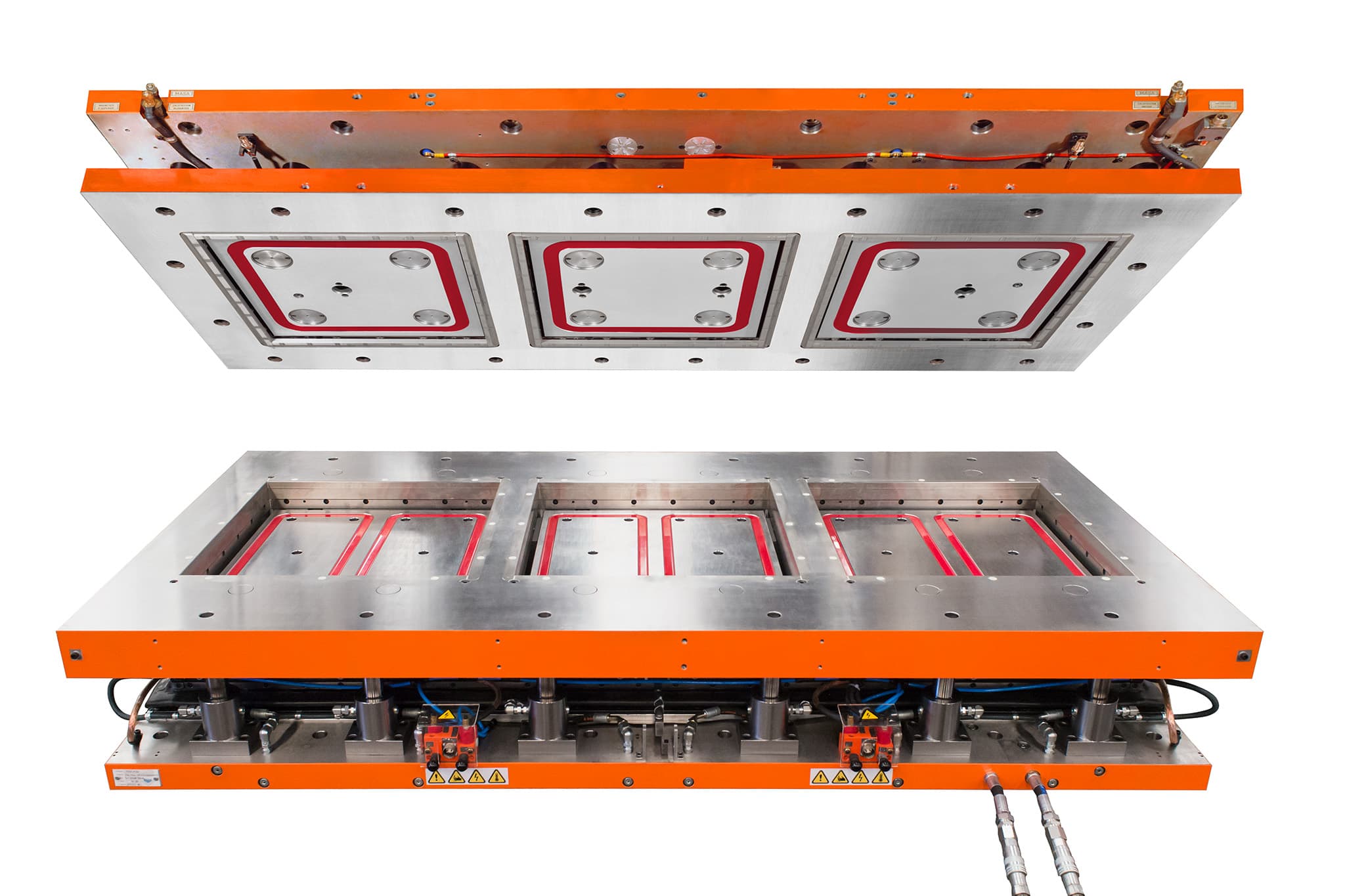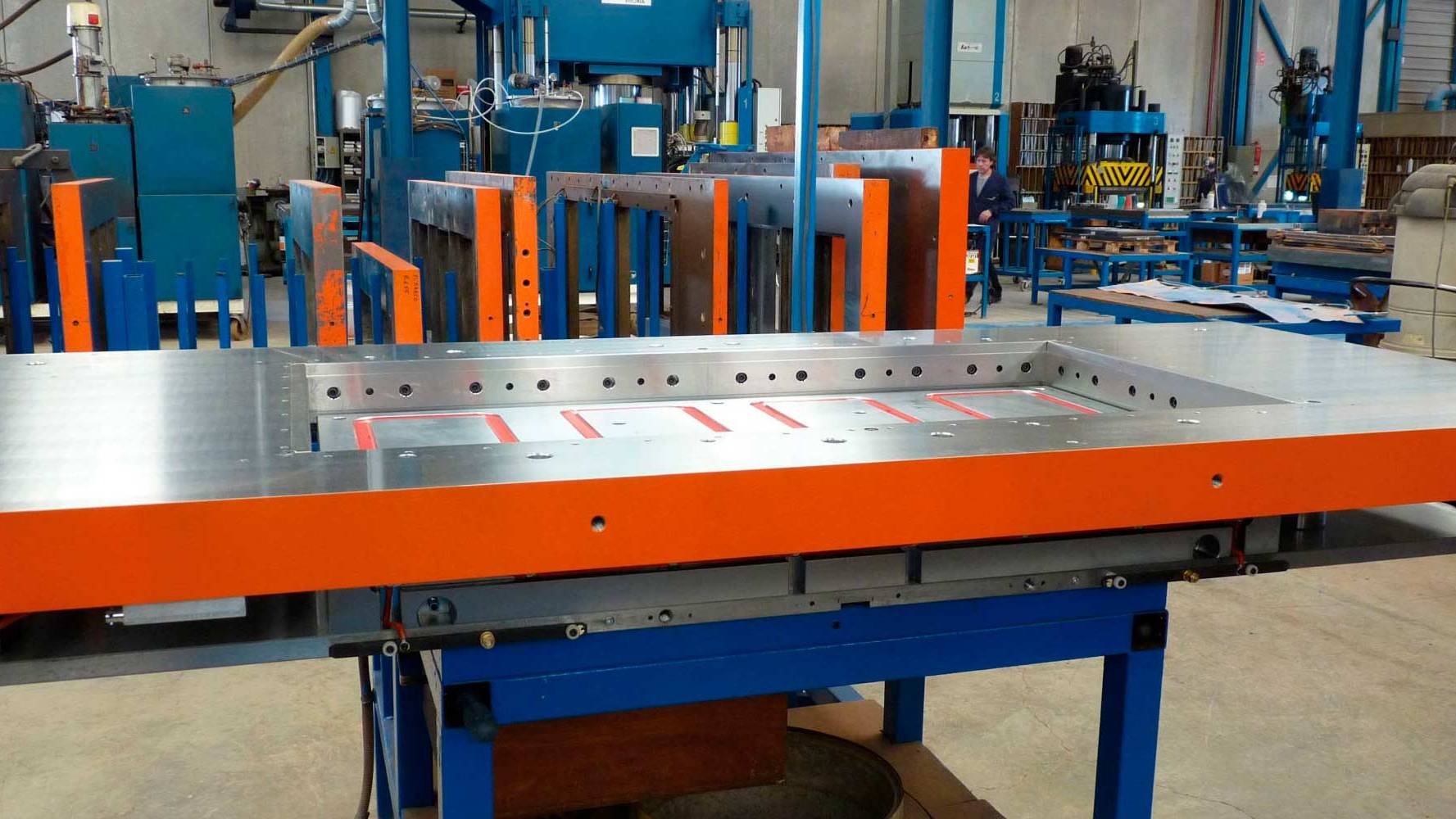ENTRY MOULD
This is a very simple mould which allows to increase production in the press. It makes easy the ceramic production with any kind of powder: porous, stoneware or porcelain body. One of its characteristics is that it allows the manufacture of different piece thicknesses in the same mould. Depending on the good face where it is pressed, there are two types of moulds:
Traditional mould
Good face down. By carrying out a proportionate load for each relief, it is possible to improve the compaction of the piece and allows a precision finish on the good face of the tile. Increase the productivity of the punches.
Reversed mould
Good face up. Punch pressing position is reversed when reliefs are deeper in order to avoid any kind of problem in the exit of pieces.
SEMI-ENTRY MOULD
The main characteristic of semi-penetrating moulds is that the upper punches penetrate the pressing cavity and while the tile is being pressed, the upper plate pushes down the die of the mould. In this way, it is achieved that the piece once compacted, is very close to the extraction point, reducing friction during the extraction of the piece and therefore the defects in it.
DOUBLE MOULD
This mould is especially used for the manufacture of technical porcelain. It is composed of a lower and an upper mould, both designed to achieve installation and operation with high precision and safety by users. All this is achieved through the application of preventive barriers such as mechanical blocks on the moving parts of the moulds and the sealing of the cavities to prevent the entry of dust and humidity that could affect the proper functioning of the mould.
By pressing the good side up, the piece does not suffer damage in the extraction process or in the tiles turner.
MOULD FOR UNIVERSAL BASEMENT
It is the composition of a connection plate that is installed directly to the universal base. This connection plate is composed of the main plate, punch holder and die.
When the user wants to change the format, it is just needed to change the connection plate, that already has the punch holders installed, and also the die. Thus, it is possible to considerably reduce the time invested in changing the format and reducing the cost of the mould.


